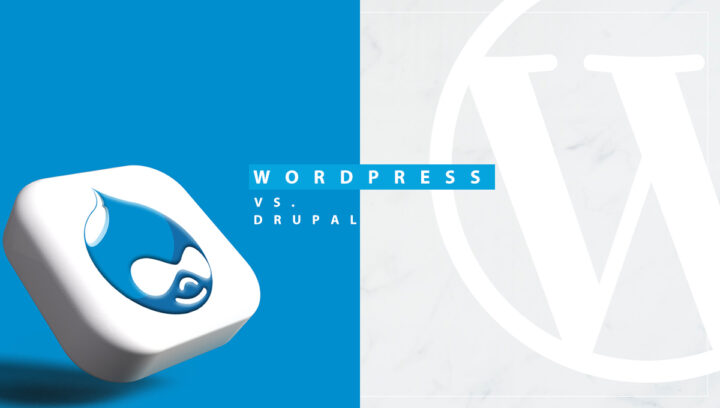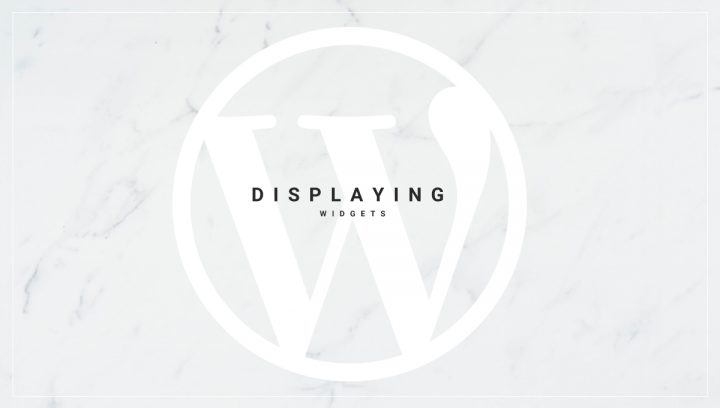Gatsby is an outstanding framework for the development of static websites. It is one of the numerous technologies that support the Jamstack web development methodology, which makes it possible for websites and applications to function independently of a web server.
For those who aren’t familiar, JAM is an acronym that stands for JavaScript, APIs and Markup. In layman’s terms, this refers to a website that primarily comprises of HTML and uses JavaScript to make things happen.
Gatsby allows e-commerce developers to construct sites more quickly, launch them without any problems, and reduce the number of security vulnerabilities. This allows e-commerce enterprises to use any API they choose to improve the customer’s purchasing experience.
Additionally, the platform has rapidly increased its market share, and in the past two years, it has virtually doubled the number of websites it supports. Over 228,000 websites currently utilize Gatsby, including industry giant Ubisoft.

What is Gatsby Framework?
Gatsby is a free and open-source static site generator that was developed on top of Node.js with the help of React and GraphQL. It has over 2500 plugins that one may use to generate static websites based on sources such as Markdown documents, MDX (Markdown with JSX), images, and a wide variety of content management systems, including WordPress, Drupal, and others.
It’s another static site generator, like Hugo, Jekyll, etc.
One can use Gatsby to create static websites that act as Progressive Web Apps, adhering to the newest web standards.
Important features of Gatsby
- Gatsby uses GraphQL to get data from anywhere, like different databases, WordPress sites, etc.
- Gatsby uses React JS for site templates and CSS for site styling.
- Gatsby also has a plug-in architecture that makes things easier to use by letting plug-ins work with JavaScript.
What is a static website?
In contrast to traditional dynamic websites, which render the webpage at the time of the request, a static website employs server-side rendering to provide pre-built HTML, CSS, and JavaScript files to a web browser.
If you use a static site, you can separate your content repository from your front-end interface, giving you more control over how you present your content. A static site is attractive to businesses for financial reasons because static files are small, fast, and cheap to serve.
Static websites have become increasingly common in recent years. This increase is because of two main factors: improved developer tools (languages and libraries) and a growing need among businesses to maximise website performance beyond the constraints of a database-driven site.
Resume sites, portfolio sites, one-off landing pages, and instructional blogs are all examples of static websites. These sites typically consist of only a few pages and don’t need regular updates or personalised content.
What is a Static Site Generator
Static site generators are tools that take raw data and a collection of templates and generate a fully functional static HTML website. The fundamental function of a static site generator is to automate the creation of individual HTML pages and to prepare such pages in advance in order to serve them to the user. These HTML pages are pre-built so that they load rapidly in the user’s browser.
Most typically, static site generators are a part of the JAMstack web development approach.
Advantages of using Static Site
Besides automating work, a static site generator offers the following benefits:
Enhanced efficiency
Static websites can save time and energy by making cached pages that never expire. Also, one can minify these files before deployment to provide the lightest possible load, and one can accomplish deployment through CDNs quickly and without much effort.
Flexibility
Since most CMSs are bound to a database with predefined fields, they limit your flexibility. If you wish to add a Twitter widget to certain sites, you will typically need a plugin, a shortcode, or bespoke functionality.
If you’re working with a static site, you can drop the widget code right into a file or use a snippet.
Highly Reliable
A static website requires fewer resources to serve. To deal with too many requests, all the server has to do is return some flat files, making it easy to adjust to fluctuating traffic loads. While a web server can still be brought to its knees or APIs be overloaded, but it will take a lot of more parallel requests in order to so.
Better Security
Static site generators allow developers to employ a headless content management system by decoupling the front end from the back end. Since there are fewer potential ports of entry, static websites are safer.
Version Control and Testing
Database data is volatile. A CMS lets users add, remove, or change the content whenever they want to. The entirety of the website can be deleted with just a few mouse clicks. Although you can backup your database can be, but you may still lose some data, even if you do it regularly.
Most of the time, a static site is safer. One can save content in:
Flat files: This provides easier version control using Git. The original content is saved, and any edits made can be undone instantly.
Private databases: data isn’t needed until the site is made, so it doesn’t need to be on a public server.
Since the site can be generated and previewed anywhere, even on the user’s personal computer, testing is also simplified.
With a little more work, you can set up deployment systems that let you build the site remotely and update the live server whenever new content is pushed to a repository, reviewed, and approved.
What is Jamstack
The phrase “JamStack” refers to a modern web development architecture for building websites that includes JavaScript, Application Programming Interfaces (APIs), and Markup (JAM). Jamstack is not a technology or framework per se but rather an alternative architecture upon which one builds applications and websites.
Instead of employing a typical content management system (CMS), a Jamstack site separates the infrastructure (APIs), code (JavaScript), and content (Markup). A decoupled architecture will manage these separately on both the server and client sides. Websites and applications built with Jamstack offload as much work as possible from the server onto the user’s device. Doing so drastically reduces the number of requests sent to a server, hence cutting down on time spent waiting for a response from the server.
Mathias Biilmann, the co-founder at Netlify, came up with the term JamStack.
The Gatsby Ecosystem
Gatsby provides a number of options for creating a website. One can tailor it to meet individual needs and offer pre-made options for those just starting out, making it highly flexible.
Gatsby provides three methods for development: plugins, themes, and starters.
Plugins
Node.js packages effortlessly incorporate Gatsby’s fundamental site functionality. Typical plugins include analytics platforms, responsive content, and search engine optimization enhancements.
Themes
For Gatsby sites, a Gatsby theme is a plugin that includes a gatsby-config.js file that provides additional preconfigured functionality, data sourcing, and UI code. Since themes are essentially plugins, they may be distributed and installed via a registry like npm or yarn, and their versions can be kept up to date via the package.json file of the website.
Starters
A starter is a boilerplate, a generic Gatsby website that one can use as a basis for further development. Once someone changes the starter, it no longer has any connection to its original source.
The official Gatsby starters include a default site, a blog site, a minimal “hello world” site, and the ability to use and create themes. There are also several community-created starters that are available to use.
The term “content mesh” describes the connection between Gatsby’s three primary elements. The primary elements are
- CMS Services: Contentful, WordPress, and Shopify are some examples. As a content development platform, CMS services can serve as a central repository for data management.
- Infrastructures for development: Gatsby uses the contemporary development frameworks React and GraphQL.
- Deployment Tools: Gatsby produces the static files for deployment and integrates them with Netflify, Vercel, or AWS Amplify.
Gatsby prefetches resources from a content management system or markdown files and places them in their respective folders.
There are thousands of plugins available for the Gatsby ecosystem, including ones for things like social network integration, eCommerce, analytics, image optimization, and lazy loading.
Let’s delve deeper into React, GraphQL, and webpack, three of Gatsby’s primary building blocks.
React
React (aka React.js/ReactJS) is a free and open-source front-end JavaScript library for creating UIs with UI components. Meta, originally Facebook, manages it in collaboration with a community of individual developers and companies. Single-page, mobile, and server-rendered applications may all be built upon the powerful foundation of React using popular frameworks like Next.js.
GraphQL
GraphQL is a query language and server-side runtime technology used extensively for application programming interfaces to guarantee that the client receives all necessary data.
Facebook developed it in 2012 while building the Facebook app, and it currently serves many other purposes.
Overall, GraphQL is intended to empower API development and reduce API security concerns to a minimum by providing a query language that gives API developers complete leeway to play freely and shape APIs as they see fit.
Webpack
Webpack is an open-source, free bundler for JavaScript modules. Although it was designed with JavaScript in mind, it may also be used to modify other front-end assets, including HTML, CSS, and images, if the appropriate loaders are present. To create static assets, Webpack uses modules with dependencies.
Webpack produces a dependency graph from the dependencies, enabling web developers to employ a modular approach when creating web applications.
Webpack’s code-splitting feature allows users to generate code as needed.
To summarise, here is how Gatsby operates:
- Gatsby obtains its data using a GraphQL API.
- Then webpack is responsible for creating bundles and splitting code.
- Finally, the pre-rendered HTML, CSS, and React pages are deployed to a server.
WHAT CAN YOU BUILD WITH GATSBY?
Deciding to use Gatsby depends on the type of application you intend to create. With Gatsby, you can build:
- PWA (Progressive Web Apps)
- JamStack Websites
- Static E-Commerce Sites
- Headless e-commerce websites
- Super-fast digital business page
Gatsby Case Studies
1. Housecall Pro
Housecall Pro caters to a variety of home services industries.
Site speed, scalability, SEO, and, most crucially, the ability to publish new pages without the involvement of developers were their priorities, so they switched to Gatsby, and they weren’t disappointed.
- Gatsby made it possible for their site to be instantaneously crawlable by search engines because it produces all pages as static HTML files.
- From the time they implemented Gatsby in late November 2018 to April 2019, the blog’s organic traffic surged by 973 percent.
- From late November 2018 to April 2019, the frequency with which the marketing website appeared on the first page of Google search results for a variety of keywords grew by 56%.
2. SendGrid
SendGrid is a customer communication platform that drives engagement and growth.
After they migrated to Gatsby,
- the SendGrid Knowledge Center halved its page load times.
- The new Gatsby site initially loaded 20% more quickly, and transitions between pages were 100% quicker.
3. YouFit Gyms.
YouFit Gyms is a national chain of fitness clubs.
Since relaunching their website with Gatsby, they’ve witnessed the following:
- Increase of 22% in organic traffic
- Immediate 10% drop in the bounce rate
- The lead conversion rate increased by 60% as more people joined for a free trial.
4. Car Loans Canada
Car Loans Canada assists in connecting prospective car buyers with auto loans and car dealerships across Canada.
How they benefited from Gatsby
- Increased page views per session
- The average time a user spends on the site has grown by more than 100%.
Conclusion
Now you probably have a complete idea of the advantages that Gatsby offers. It is undoubtedly a cutting-edge technology that provides a plethora of convincing reasons for marketers, business people, corporates, and shops to make use of it.
In conclusion, we can state that if you begin learning it to advance your career or expand your knowledge, then Gatsby won’t disappoint you.


